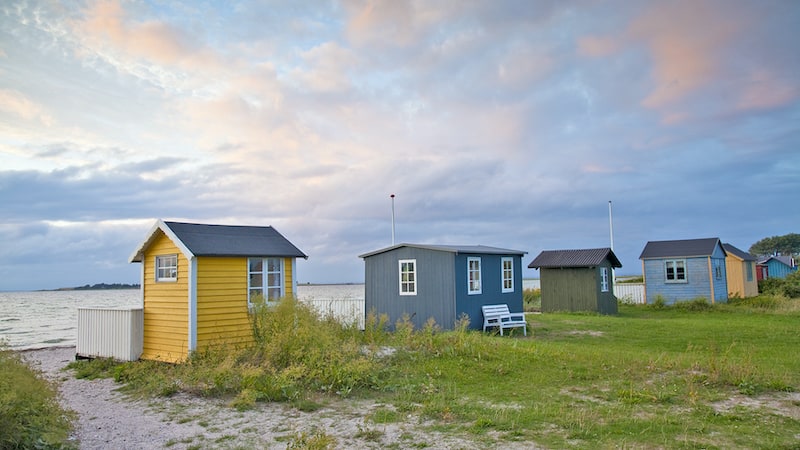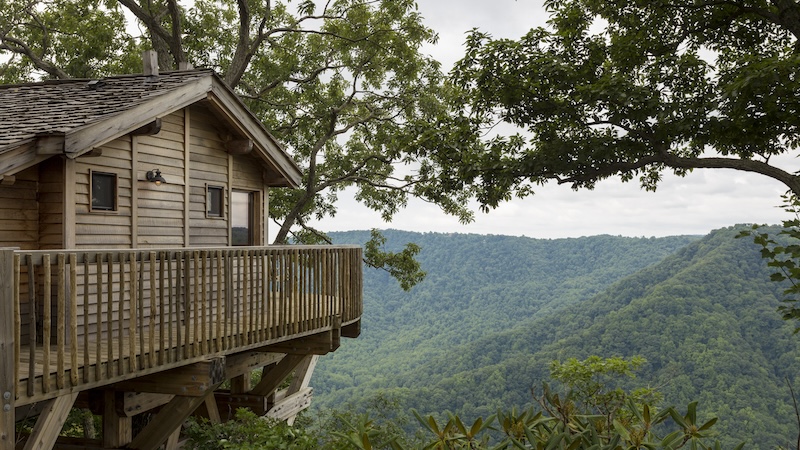Rick Steves’ Europe: AEro, Denmark’s ship-in-a-bottle island
Traveling through the little Danish island of Aero

Rick Steves hops on a bike to travel through the little Danish island of Aero: hidden villages, U-shaped farmhouses, beaches, inspiring views, and ‘hyggelig’ – where sustainability is only natural.
As we’ve had to postpone our travels because of the pandemic, I believe a weekly dose of travel dreaming can be good medicine. Here’s one of my favorite European memories from a tiny Danish island – a reminder of the fun that awaits us at the other end of this crisis.
Few visitors to Scandinavia even notice AEro, a sleepy little island on the southern edge of Denmark. It’s a peaceful and homey isle, where baskets of strawberries sit in front of farmhouses – for sale on the honor system. Its tombstones are carved with such sentiments as: “Here lies Christian Hansen at anchor with his wife. He’ll not weigh until he stands before God.”
The island’s statistics: 22 miles by 6 miles, 7,000 residents, 350 deer, no crosswalks, seven pastors, three police officers, and a pervasive passion for the environment. Along with sleek modern windmills hard at work, AEro has one of the world’s largest solar power plants.
Cycling through villages, landscapes, and crabs playing cards
AEro’s main town, AEroskobing, makes a fine home base for exploring the isle. Many Danes agree, washing up on the cobbled main drag in waves with the landing of each ferry.
With lanes right out of the 1680s, the town was the wealthy home port to more than 100 windjammers. The post office dates to 1749, and cast-iron gaslights still shine each evening. Windjammers gone, the harbor now caters to German and Danish holiday yachts. On midnight low tides, you can almost hear the crabs playing cards.
Taking a 15-mile bike ride, I piece together the best of AEro’s salty charms. Just outside of town, I see the first of many U-shaped farmhouses, so typical of Denmark. The three sides block the wind to create a sheltered little courtyard and house cows, hay, and people. I bike along a dike built in the 1800s to make swampland farmable. While the weak soil is good for hay and little else, they get the most out of it. Each winter, farmers flood their land to let the saltwater nourish the soil and grass, in the belief that this causes their cows to produce fattier milk and meat.
“Do travel experiences mellow with age like a fine wine? Does time soften the edges or sharpen them?” Read more of this excerpt from Joseph Rosendo’s travel memories book, ‘Musings.’
Struggling uphill, I reach the island’s 2,700-inch-high summit. It’s a “peak” called Synneshoj, pronounced “Seems High” (and after this pedal, I agree).
Rolling through the town of Bregninge, I notice how it lies in a gully. I imagine pirates, centuries ago, trolling along the coast looking for church spires marking unfortified villages. AEro’s 16 villages are built low, in gullies like this one, to make them invisible from the sea – their stubby church spires carefully designed not to be viewable from potentially threatening ships.
A lane leads me downhill, dead-ending at a rugged bluff called Vodrup Klint. If I were a pagan, I’d worship here – the sea, the wind, and the chilling view. The land steps in sloppy slabs down to the sea. The giant terraces are a clear reminder that when saturated with water, the massive slabs of clay that make up the land here get slick, and entire chunks can slip and slide.
Another look at this delightful Danish town
While the wind at the top seems hell-bent on blowing me off my bike, the beach below is peaceful, ideal for sunbathing. I can’t see Germany, which is just across the water, but I do see a big stone that commemorates the return of the island to Denmark from Germany in 1750.
More shades of the past as I travel through the little Danish island of Aero
Back up on the road, I pedal down a tree-lined lane toward a fine 12th-century church. Like town churches throughout the island, a centuries-old paint job gives the simple stonework a crude outline of the fine Gothic features this humble community wished it could afford. Little ships hang in the nave, perhaps as memorials to lost sailors. A portrait of Martin Luther hangs in the stern, making sure everything’s theologically shipshape. The long list adjacent to the portrait allows today’s pastor to trace her pastoral lineage back to Dr. Luther himself. The current pastor, Janet, is the first woman on the five-centuries-long list.
From the church, it’s all downhill back to AEroskobing. The sun is low in the sky, so I coast right on through town to the sunset beach – where a row of tiny huts lines the strand and where so many locals enjoyed a first kiss. The huts are little more than a picnic table with walls and a roof, but each is lovingly painted and carved – stained with generations of family fun, memories of pickled herring on rye bread, and sunsets. It’s a perfectly Danish scene – like AEro itself – where small is beautiful, sustainability is just common sense, and a favorite local word, hyggelig, takes “cozy” to delightful extremes.
Rick Steves (www.ricksteves.com) writes European guidebooks, hosts travel shows on public TV and radio, and organizes European tours. This article was adapted from his new book, For the Love of Europe. You can email Rick at rick@ricksteves.com and follow his blog on Facebook.
Explore more of Rick Steves’ Europe in Boomer
© 2020 RICK STEVES
As an Amazon Associate, Boomer Magazine earns from qualifying purchases of linked books and other products.



